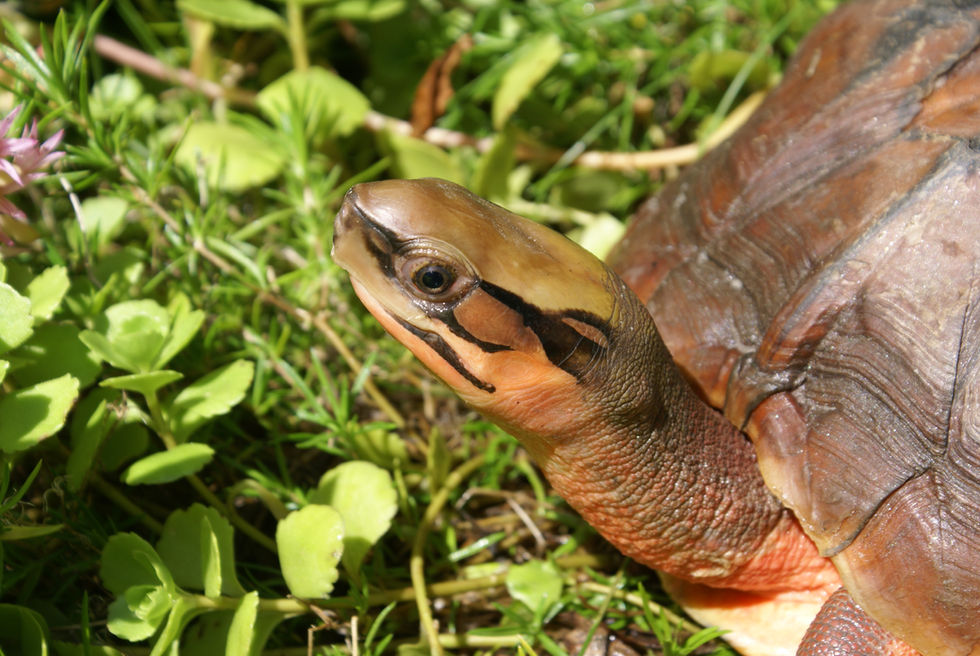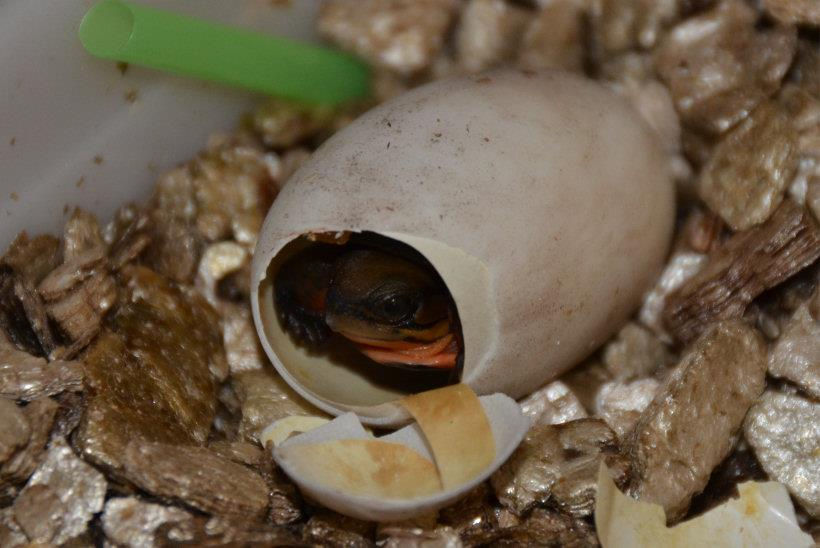top of page

Cuora cyclornata (Blanck, Mccord & Le 2006)
-
Cuora cyclornata annamitica (Blanck, Protiva, Zhou, Li, Crow & Tiedemann 2017)
-
Cuora cyclornata cyclornata
-
Cuora cyclornata meieri (Blanck, Mccordi & Le 2006)
Cuora cyclornata was long considered a color morph of C. trifasciata, but in 2006 was shown to be a distinct species. It reaches 22–35 cm SCL; males have a thicker and longer tail than females. The carapace is chestnut brown with three longitudinal black stripes; the plastron is mainly black and the head is olive-brownish. Three subspecies are recognized: the nominate one in southern central Vietnam, adjacent Laos, and possibly also in extreme eastern Cambodia, C. c. annamitica in central Vietnam and adjacent Laos (Annamite mountain range), and C. c. meieri in northern Vietnam and southern Guangxi Province, China. It once inhabited the hill streams and marshes in low to mid- elevation forests throughout these areas. Being faster-growing and considered the better-tasting variety of C. trifasciata by Chinese for decades, intense hunting of the species began with the border opening between China and Vietnam in 1991, leading to its rapid demise. Deforestation has also played a role, and fewer than 20 wild-collected specimens have surfaced in the trade during most recent years. Fewer than 500 specimens may remain in the wild. No delineated stronghold for the species is currently known and it seems to be extirpated from most of its range. It is currently being farmed by the thousands in China, but the demand for wild specimens is still high and the conservation value of the farm-produced turtles is low due to high potential for uncontrolled hybridization and the commercial- rather than conservation-minded orientation of many farmers involved with this species. Fewer than 100 specimens are in assurance colonies in Europe and the United States, where captive breeding of genetically pure lineages is occurring in increasing numbers. Future release projects in protected areas are currently being considered, but are hindered by the high market value and demand for the species.
While phenotypically resembling Cuora trifasciata (Bell, 1825) in several characters, this species is morphologically well distinguishable. The carapace is generally flatter in profile and more rounded in dorsal aspect compared to its Chinese sister species.
Cuora cyclornata can reach up to 35 cm SCL and weigh up to 6 kg, compared to 25 cm SCL and 3 kg in C. trifasciata.
The close phenotypic resemblance led many to believe C. cyclornata is a synonym of Cuora trifasciata, which was further supported by conflicting genetic data. However, in 2014 it was shown that the species is, genetically, significantly divergent.
The subspecies of C. cyclornata are most easily distinguishable by the plastral pattern and the chin coloration - bright orange in C. c. cyclornata, yellowish orange in C. c. annamitica, and white in C. c. meieri, . The plastral pattern in C. c. annamitica and C. c. meieri is mainly black, while humerals and gular scutes in C. c. cyclornata exhibit limited black coloration.
Cuora c. annamitica (Blanck et al. 2017) can be differentiated from C. c. cyclornata by the less intense chin coloration and the mainly black plastral front lobe, as well as morphometrics and genetics; it is also easy to distinguish from C.c.meieri by chin coloration, shell shape and plastral structure. Likely the once most abundant and wide spread of the C. cyclornata subspecies, C. a. annamitica has become scarce due to over-collection. It can exceed 30 cm SCL and weigh more than 5 kg, but usually measures approximately 25 cm SCL and 2.5-3 kg.
Cuora c. meieri (Blanck, Mccord & Le, 2006) was named in honor of turtle husbandry expert Elmar Meier. Type locality: Tam Dao, Vietnam. Distinguished by its white chin coloration and the entirely black plastral pattern. Restricted to northern Vietnam and extreme southern Guangxi, China. It can reach up to 30 cm SCL.

© Cuora.org
© Cuora.org
bottom of page

























